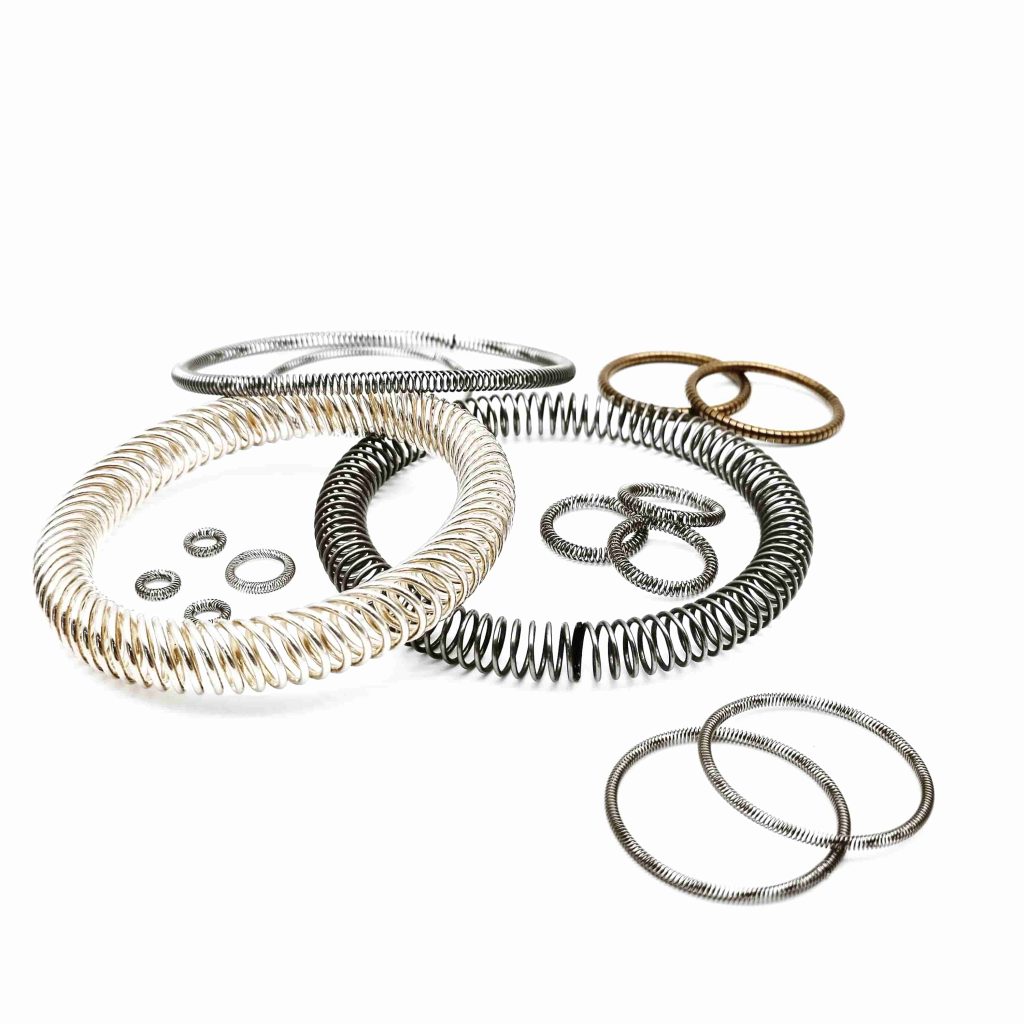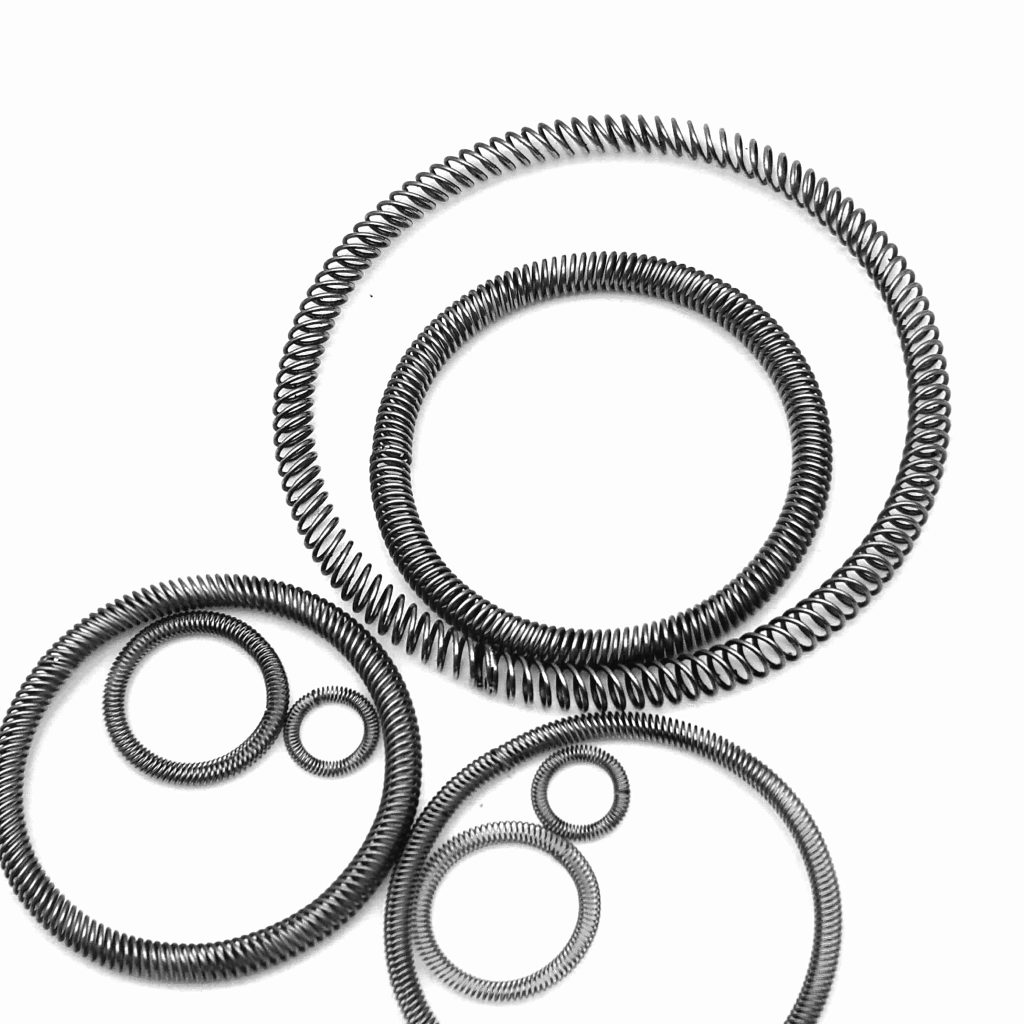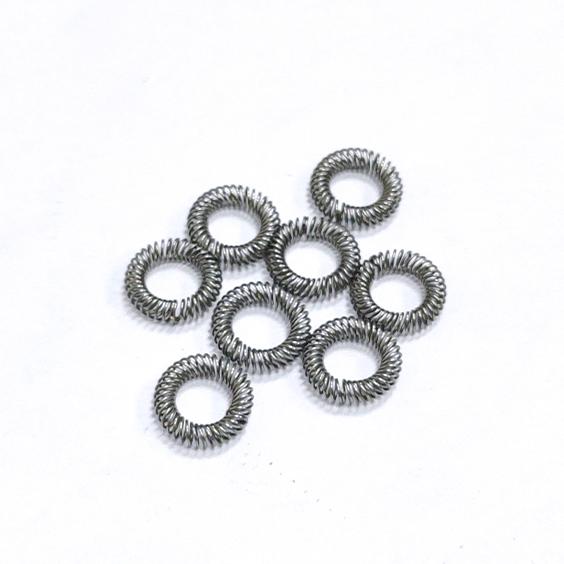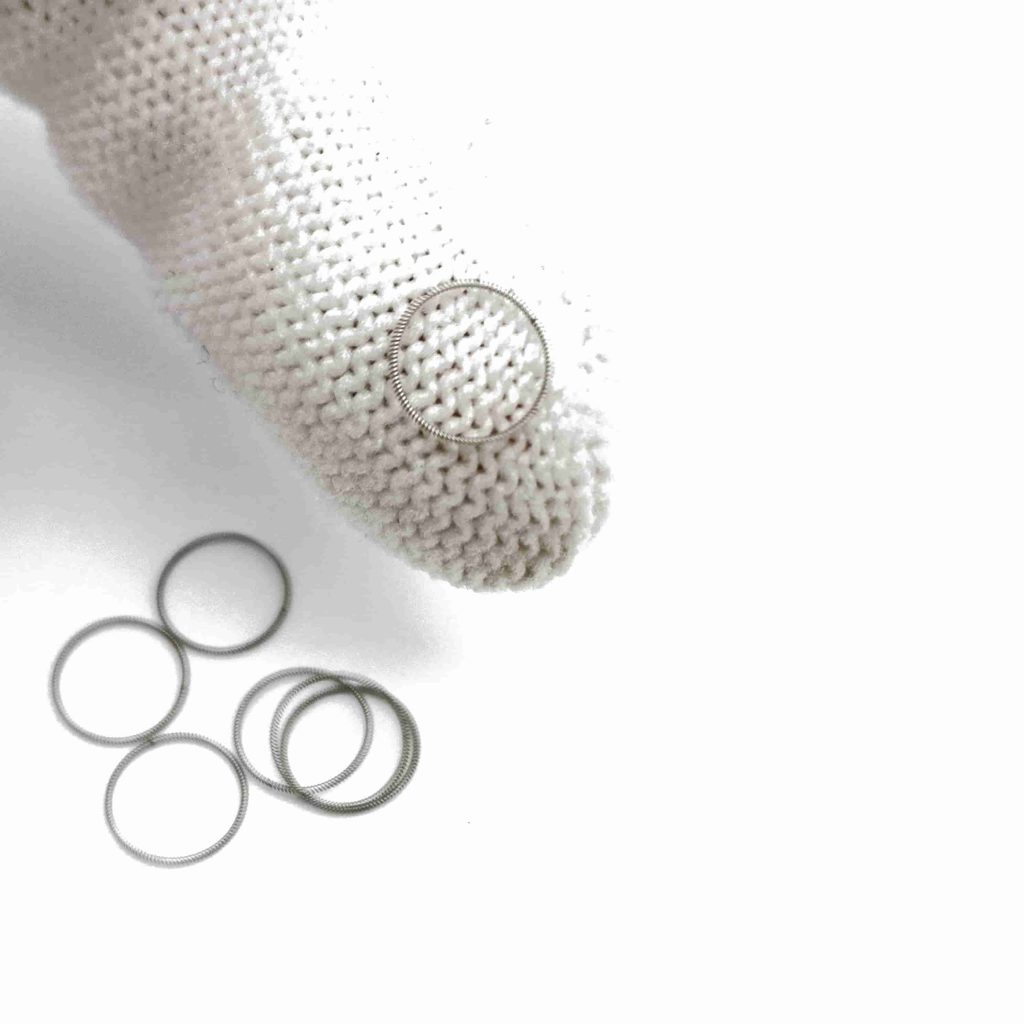
Slant coil springs with high-performance sealing
Introduction
Slant coil springs, also known as canted coil springs or 斜圈泛塞封弹簧 in Chinese, are revolutionary mechanical components widely used in industries requiring high-performance sealing, electrical conductivity, and mechanical fastening. This comprehensive guide explores their design, applications, advantages, and manufacturing processes, offering insights for engineers, designers, and procurement professionals.
1. Understanding Slant Coil Springs
Slant coil springs are precision-engineered wire-wound springs with a unique elliptical cross-section and a canted (angled) coil orientation. Unlike traditional helical springs, their design allows for a near-constant load throughout a wide deflection range, making them ideal for applications demanding stability under varying conditions.
1.1 Key Design Features
- Oval Cross-Section: Provides uniform contact pressure distribution.
- Canted Coils: Angled design compensates for surface irregularities and dimensional variations.
- Material Options: Stainless steel (301,304, 316), Hastelloy, copper alloys, and custom materials for extreme environments.
- Plating: Gold, silver, or nickel plating enhances conductivity and corrosion resistance.
1.2 Working Principle
When compressed, each canted coil deforms independently, creating multiple contact points along the sealing or conductive surface. This unique behavior results in a near-linear load-deflection curve, which means the spring maintains a remarkably stable force output even as its deflection changes. Unlike traditional helical springs—whose load increases exponentially with compression—slant coil springs exhibit a flat curve, with load variation typically within ±10% across 60-80% of their maximum deflection range.
2. Applications Across Industries
Slant coil springs excel in diverse sectors due to their versatility and reliability:
2.1 Medical Devices
- Surgical Instruments: Provide secure connections in laparoscopic tools and diagnostic equipment.
- Implantable Devices: Used in pacemakers and neurostimulators for low-resistance electrical contacts .
- Sterilization: Resist harsh chemicals and high temperatures during autoclaving.
2.2 Oil & Gas
- Downhole Tools: Withstand extreme pressures (up to 15,000 PSI) and corrosive fluids in drilling equipment.
- Sealing Solutions: Pair with PTFE jackets for leak-proof performance in fracking and offshore platforms .
2.3 Automotive & Aerospace
- Electric Vehicles: Enable high-current connections in battery packs and motors.
- Aerospace: Used in fuel systems, landing gear, and avionics for EMI/RFI shielding .
2.4 Industrial & Semiconductor
- High-Voltage Equipment: Ensure stable conductivity in switchgear and power transmission.
- Semiconductor Manufacturing: Resist particle contamination in cleanroom environments .
3. Advantages Over Traditional Springs
Slant coil springs outperform conventional helical or cantilever springs in critical areas:
- Continuous Contact: Maintains consistent pressure across the entire sealing surface.
- Low Friction: Reduces wear in dynamic applications like rotary seals .
3.2 Electrical & EMI/RFI Shielding
- Multi-Point Contact: Enhances conductivity and reduces signal loss.
- Shielding Efficiency: Blocks electromagnetic interference in sensitive electronic systems .
3.3 Durability & Reliability
- Near-Zero Compression Set: Retains shape after repeated cycles.
- Corrosion Resistance: Materials like Hastelloy C-276 withstand aggressive chemicals .
3.4 Space-Saving Design
- Compact Size: Fits into tight spaces while delivering high load capacity.
- Customization: Available in various cross-sections and lengths .
4. Manufacturing Process
Producing slant coil springs involves precision engineering and quality control:
4.1 Material Selection
- Stainless Steel: Standard for general applications (e.g., 302, 316).
- Special Alloys: Hastelloy for high-temperature corrosion, copper for conductivity.
- Plating: Gold or silver for medical and aerospace applications .
4.2 Fabrication Steps
- Wire Winding: Oval-shaped wire is wound into canted coils using CNC machines.
- Laser Welding: Ends are welded to form continuous rings or cut-to-length segments.
- Heat Treatment: Improves material strength and fatigue resistance.
- Quality Testing: Load-deflection testing, dimensional inspection, and material analysis .
4.3 Customization Options
- Groove Matching: Springs can be tailored to specific groove dimensions.
- Load Adjustment: Light, medium, or heavy loads based on application requirements .
5. Industry Standards & Compliance
Slant coil springs adhere to rigorous standards:
- ISO 10993: Biocompatibility for medical devices.
- API 6A/17D: Compliance for oil & gas equipment.
- RoHS/REACH: Environmental regulations for chemical safety .
6. Installation & Maintenance
6.1 Best Practices
- Clean Installation: Avoid debris to prevent premature wear.
- Proper Alignment: Ensure springs fit snugly in grooves to maintain contact pressure.
- Lubrication: Use compatible lubricants for dynamic applications.
6.2 Maintenance Tips
- Regular Inspections: Check for corrosion or deformation.
- Replacement Guidelines: Replace springs showing signs of fatigue or reduced load capacity.
7. Market Trends & Future Innovations
The global market for slant coil springs is driven by:
- Growth in Medical Devices: Demand for minimally invasive surgery tools.
- Expansion in Oil & Gas: Exploration in harsh environments.
- Advancements in EVs: Need for high-conductivity components.
Future innovations include:
- Smart Materials: Shape memory alloys for adaptive load control.
- 3D Printing: Custom designs with complex geometries.
- Eco-Friendly Coatings: Reduced environmental impact .
8. Case Studies
8.1 Medical Implant Success
A slant coil spring in a neurostimulator improved electrical contact reliability by 90%, reducing device failures.
8.2 Oil & Gas Efficiency
In a subsea valve, a Hastelloy C-276 spring withstood 10,000 PSI and acidic fluids for 10+ years without failure.
9. Choosing the Right Supplier
Select a manufacturer with:
- Engineering Expertise: Custom design capabilities.
- Quality Certifications: ISO 9001, ASME, or API compliance.
- Global Reach: Support for international projects .
10. Conclusion
Slant coil springs are indispensable in industries requiring precision, durability, and innovation. Their unique design, material flexibility, and wide range of applications make them a preferred choice for engineers worldwide. Whether sealing in extreme environments or enabling advanced medical devices, these springs continue to redefine performance standards.



